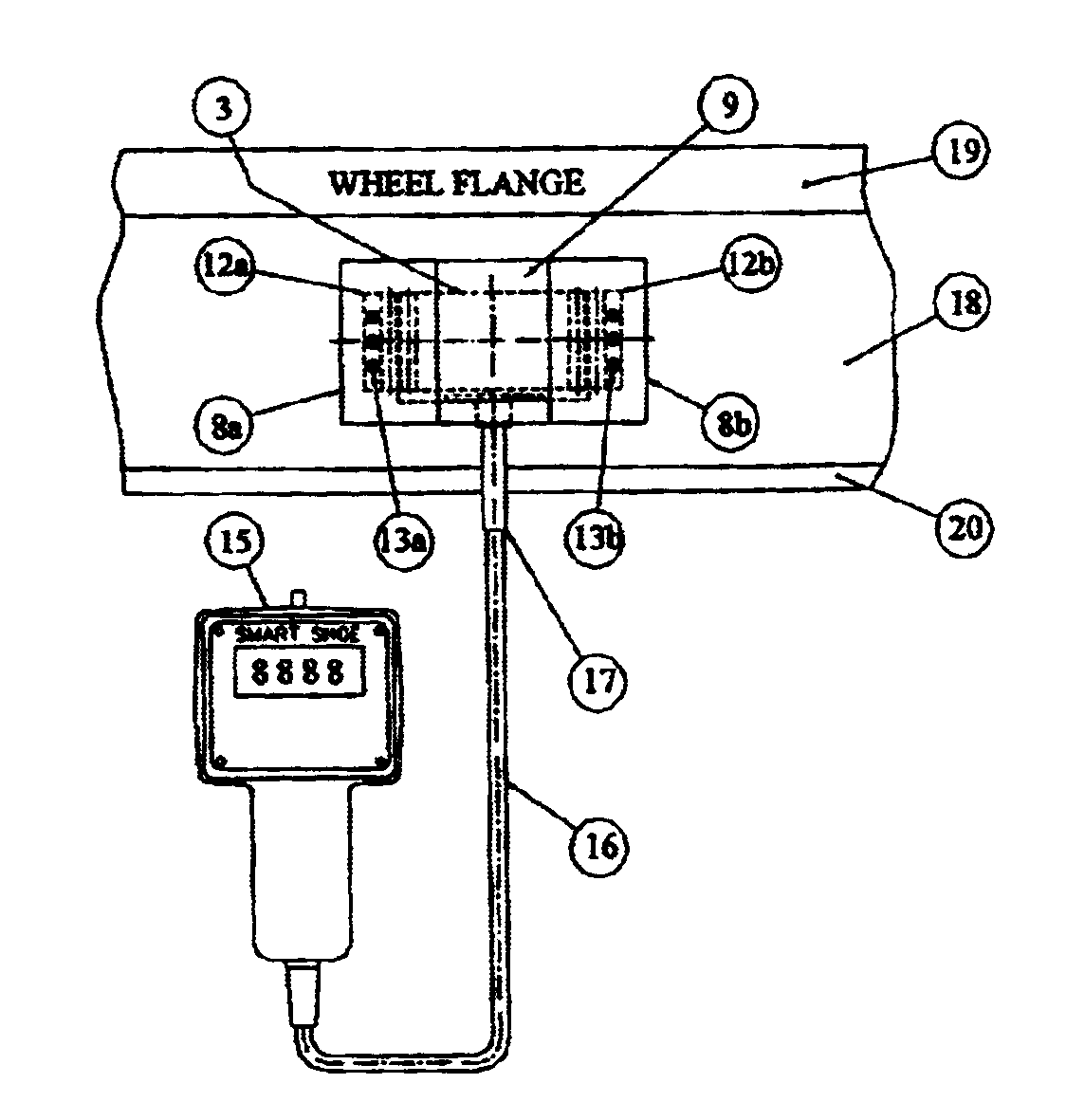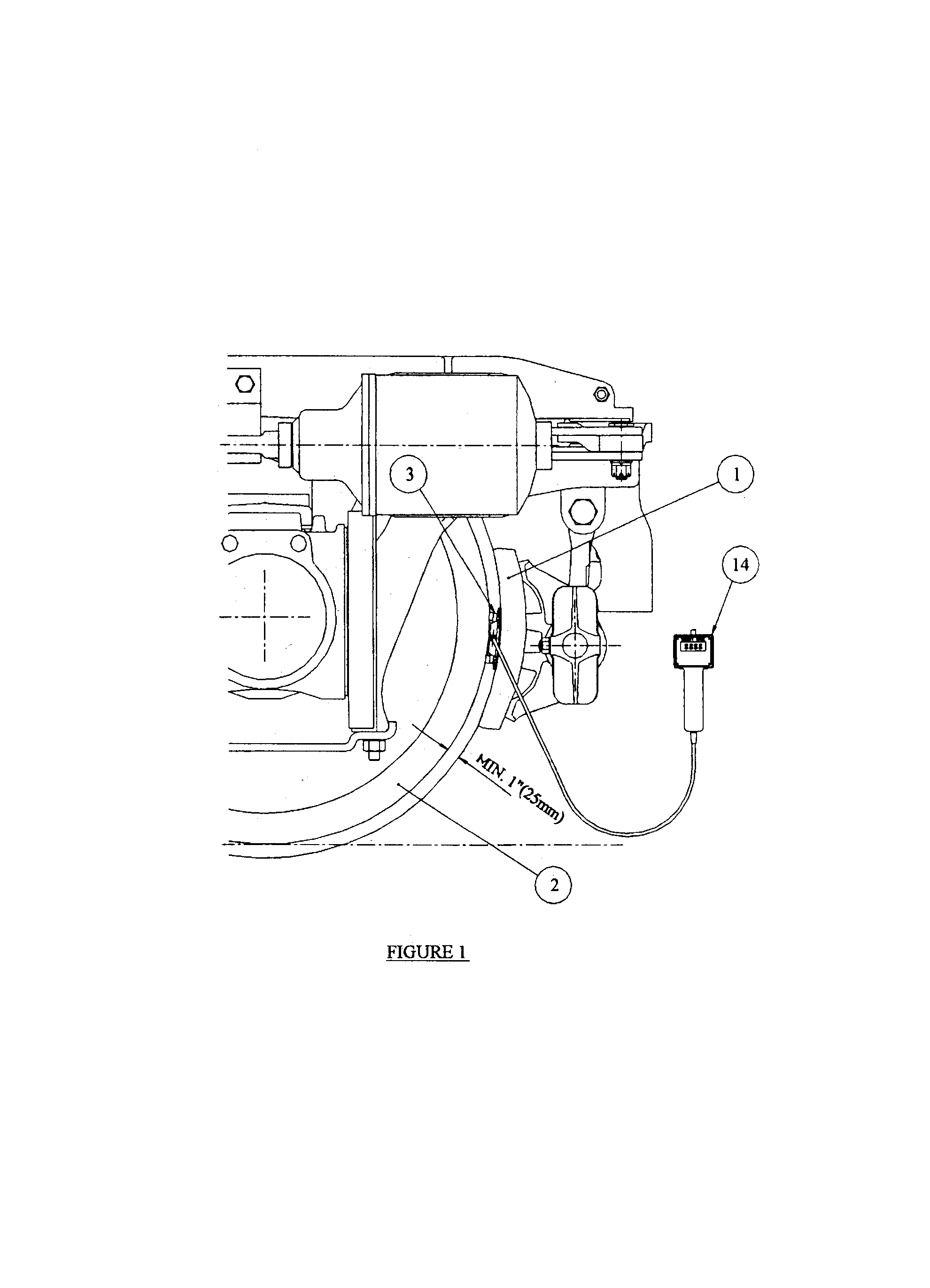Method and device to measure the brake force for railroad vehicles
a technology for railroad vehicles and brake force, applied in the direction of braking systems, electrical/magnetic measuring arrangements, structural/machine measurement, etc., can solve the problems of non-repeatability of brake force tests, measurement errors, and the largest when compared with errors, so as to improve the consistency of measurements, prevent the surface deterioration of the brake shoe, and improve the accuracy
- Summary
- Abstract
- Description
- Claims
- Application Information
AI Technical Summary
Benefits of technology
Problems solved by technology
Method used
Image
Examples
Embodiment Construction
As mentioned above, all known methods and devices used to measure the brake force for railway vehicles require the replacement of the brake shoe with a special brake force-measuring shoe (or similarly the replacement of the brake pad with a measuring pad).
Unlike the known methods and devices, according to the present invention, the brake force is measured directly by inserting a special device (sensor) between the braking surfaces. So, "directly" refers to the fact that currently what is measured is the brake force applied by a measuring shoe, not by the actual brake shoe, with all the shortcomings and limitations mentioned above (this preferred embodiment of the invention refers to the measurement of the brake force for a system using a brake shoe pressed against the wheel tread).
By using a pry bar, a clearance of about one inch can be created between the brake shoe 1 and the wheel tread 2 when the brake is not applied. This will allow the insertion (slide-in) of a special sensor, ...
PUM
| Property | Measurement | Unit |
|---|---|---|
| diameter | aaaaa | aaaaa |
| brake force | aaaaa | aaaaa |
| bending moment | aaaaa | aaaaa |
Abstract
Description
Claims
Application Information
 Login to View More
Login to View More - R&D
- Intellectual Property
- Life Sciences
- Materials
- Tech Scout
- Unparalleled Data Quality
- Higher Quality Content
- 60% Fewer Hallucinations
Browse by: Latest US Patents, China's latest patents, Technical Efficacy Thesaurus, Application Domain, Technology Topic, Popular Technical Reports.
© 2025 PatSnap. All rights reserved.Legal|Privacy policy|Modern Slavery Act Transparency Statement|Sitemap|About US| Contact US: help@patsnap.com



